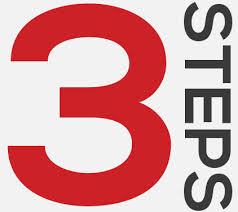Here are three simple steps to take in the first 12 weeks after giving birth ( your “4th Trimester”) that will drastically help your post-baby body recovery. 
1) Wrap your Belly: Women have been wrapping up their torsos after delivering babies for thousands of years. Japanese women wear a “sarashi”, Latin women bind themselves with a “faja” and Malaysian women use a “bengkung”. North Americans are evidently far behind when it comes to this practice! One of my new clients started crying after she bound her belly following her third c-section. Alarmed, I asked if she was ok. She responded saying her body felt “so much better” and was upset wishing someone had told her about binding benefits after her first two deliveries.
Wrapping the belly after delivering your baby provides support to stretched out abdominal muscles, helps your uterus contract, can reduce back pain (especially those with C-sections and abdominal wall separation), helps rid your body of excess fluids and helps pull your hips and ribcage back into their pre-baby position. The greatest benefit comes from binding during the first 8 weeks postpartum, when the hormone levels of relaxin are still very elevated. It’s a no brainer: binding is a win-win. Just make sure you’re not cinching too tight and putting downward pressure your on pelvic floor. You also don’t want it so tight that you have trouble breathing! It had to be said!
2) See a Pelvic Floor Physiotherapist: You just grew a human and carried it around in your womb for the better part of a year. Regardless of how you deliver your baby – vaginal or caesarean, the weight of your uterus has been pushing sustained downward pressure on your pelvic floor for many months. Your pelvic floor is like a hammock from pubic to tail bone that supports the internal organs, prevent urine leakage, supports your spine, and keeps your sex life happy, to name but a few of its functions. Pelvic Floor Physiotherapists are licensed to do internal exams and can safely determine if a) Your pelvic floor is weak or tight b) If you know how to properly do a kegel, c) If your bladder, uterus or rectum have dropped, and to what degree. d) If you have abdominal separation or diastasis recti.
These highly specialized physiotherapists are invaluable to postpartum women. In fact, in France each woman receives pelvic floor physiotherapy appointments after childbirth as part of her government covered health care. Even if you don’t have extended health insurance, these practitioners are worth every penny! Even just one visit can tell you so much. Here’s where you can search for a Pelvic Floor Physiotherapist in your area.
3) Connect with your Deep Abs: No we’re definitely not talking about crunches. It all starts with understanding how to engage your pelvic floor (refer to step 2 above!) The idea is to work your deepest layer of stabilizing muscles called your Transversus Abdominus. This deep muscle wraps around your torso like a corset and stabilizes and compresses the abdomen for a “flat belly.” This is key after giving birth when your internal organs are contracting back down to their pre-baby size. Learning to engage the deep abs is also crucial to “lifting” your internal organs and preventing pelvic organ prolapse, which often happens over the course of pregnancy and during pushing in delivery. (NOTE: traditional sit ups can actually make prolapsed organs drop further as the forward crunching movement creates intra-abdominal pressure, essentially pushing things “out the exit door”. So, to reiterate – NO crunches!)
The best way to engage this inner core unit is by recruiting your pelvic floor and doing a deep belly vacuum exercise through diaphragmatic breathing. The result is a flat strong lower tummy.
The good news with all of these steps is you can start right away. The exercises in step 3 are gentle, similar to a meditative breathing (they require a great deal of concentration!) Give your body the time and proper tools it needs to recover. Connecting physiologically with your muscles will give you the strength and confidence to get back to your favourite activities, whatever they may be!
Cheers to all that!
